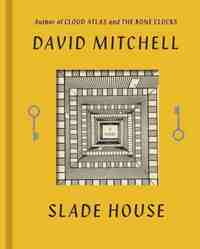Slade House by David Mitchell
 Friday, January 15, 2016 at 9:19AM
Friday, January 15, 2016 at 9:19AM 
Published by Random House on October 27, 2015
Too many horror novels are horribly dull. Moreover, horror fiction that isn’t well written (e.g., most vampire novels) can be excruciatingly awful. Slade House suffers from none of those faults. It is engaging, surprising, smart, and by the end, quite creepy.
Strange things happen in Slade Alley. A mansion, hidden on the other side of a small doorway in the middle of the alley, is difficult to find, perhaps because most of the time it isn’t there. The mansion is Slade House.
In the first of the novel’s five segments, Nathan Bishop’s mother takes him to Slade House. There he meets Norah Grayer and plays games with a kid who turns into a vicious dog -- unless Nathan imagined the whole thing. In the second segment, DI Gordon Edmonds (a lazy, racist representative of the Thames Valley Police), meets the mansion’s owner, Chloe Chetwynd, after traveling to Slade Alley to investigate a tip concerning the Bishops’ disappearance nine years earlier. Chloe denies any knowledge of Norah, leading the reader to wonder whether she is being deceitful, whether multiple mansions are hidden in Slade Alley, or whether there is some other answer to the mystery.
We learn something of what’s going on at the end of the second segment, before we move forward another nine years. This time a group of college kids decide to investigate the mysterious disappearances that seem to occur in Slade Alley every nine years. The segment is narrated by Sally Timms, whose sister, a journalist, turns up in the fourth segment.
The book’s structure makes the first four segments come across as linked short stories, each with its own cast of characters. Tying all the segments together is Fred Pink, who knows something about Slade House but, since he appears to be a raving lunatic, cannot get anyone to listen. The final segment again features a new character, but that segment twists the story in the direction of a satisfying conclusion.
Horror is a traditional vehicle for exploring themes of good versus evil. Slade House defines evil as the belief that it is fine to improve or extend one’s own life by taking the lives of others, a belief that is expressed in slogans like “might makes right,” uttered by “those who voluntarily amputate their consciences.” There is evil aplenty for the reader to enjoy in Slade House. The imaginative story, told in praiseworthy prose, is more often fun than frightening, but its best moments are at least mildly chilling.
RECOMMENDED